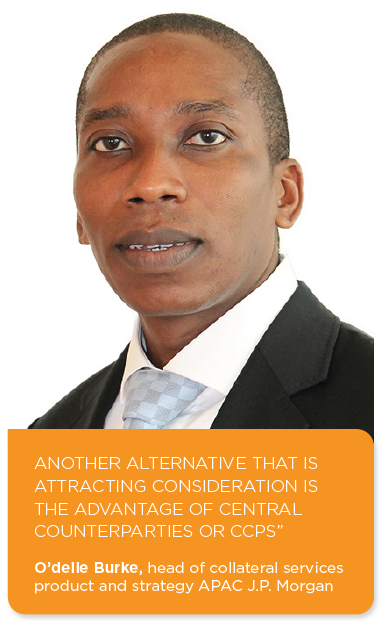Collateral Guide 2023 - UMR: A lot done, but more to do

A lot done, but more to do
Phases five and six of the uncleared margin rules have affected market participants and clients in many different ways – and there is still work to be done.
This Thought Leadership article is part of the 2023 Collateral Guide, which can be accessed here.
Over recent years, UMR has focused attention on issues such as data quality and management, the robustness of margin models, how to calculate margin on exotic instruments, and best practice for tracking collateral ownership transfers.
The phase six deadline may now have passed but while a significant number of buy-side firms are in scope in this final phase, a large subset of these firms will remain below the segregated initial margin threshold and therefore will not be required to exchange margin.
Trading under the IM exchange threshold offers in-scope firms temporary relief from initiating segregated IM operations, but this eventually will need to be addressed as long as the firm is being captured under the uncleared margin rules explains O’delle Burke, head of collateral services product and strategy APAC J.P. Morgan.
“Another alternative that is attracting consideration is the advantage of central counterparties or CCPs,” he says. “Some firms are weighing the cost of investment and resources for non-cleared OTC trades that are clearable against the cost of central clearing through clearing brokers. Equities seem to be emerging as a new frontier for IM collateral as well as variation margin collateral, which will make tri-party an indispensable tool for buy-side firms going forward.”
It has been expected for a few years now that the low average aggregate notional amount or AANA threshold (€8bn) would catch a significant number of buy-side entities in the scope of regulatory initial margin.
Many firms have tried to take advantage of the €50 million equivalent threshold to minimise funding costs, but mainly to have more time to finalise the negotiation of the documentation packages explains David Beatrix, head of OTC & collateral services, securities services at BNP Paribas.
“A big part of the readiness projects has been to define the allocation of threshold, simulating initial margins in both SIMM and Grid and defining scenarios to prioritise the negotiation packages (which entities versus which counterparties),” he says.
“The major difference with the previous phases is the huge number of relationships that have to be set up, either to operate margin exchanges from day one or - in most cases - to manage the IM threshold calculation. The post-compliance phase, where relationships will progressively move from an IM monitoring to an executed documentation mode, will last for months (possibly years), hence the need to keep a strong onboarding governance for quite some time.”
For smaller firms, forecasting is fundamental to ensure that collateral buffers are minimised and there are no collateral shortfalls.
“Predicting calls and looking at cash ladders over a future time horizon allows firms to see what they will have and what their requirements will be ahead of time,” says Trevor Negus, senior product manager at SmartStream. “This enables informed decisions on term lending and potential borrowing requirements to cover margin calls.”
Bimal Kadikar, founder and CEO Transcend, refers to two specific areas where further work is required in the UMR space.
“One of the key requirements of UMR is that when a firm receives collateral the responsibility is with the recipient to ensure they received the right quality and quantity of collateral from their counterparty,” he says.
“There is therefore a validation component that requires significant focus and we expect that to be a significant focus over the next 18 months among companies that did not prioritise it during the compliance phase.”
In terms of posting collateral there will also be emphasis on optimisation to see if there are opportunities to reduce costs.
Unlike those firms in phases 1-4, some phase five and six firms were able to benefit from a rule that allowed firms to delay (or never be subject to) some of the UMR preparation steps should their IM remain below $50m.
While the regulatory relief was certainly welcomed by the market, it still meant a significant amount of preparation explains Neil Murphy, business manager triResolve at OSTTRA.
“In reality, some firms ploughed on to complete all - or most - UMR steps ahead of time, including signing IM documentation and opening custody accounts,” he says. “In contrast, others focused on the regulatory minimum of IM calculation only.”
The end result was a wide range of readiness across the market, with some firms exchanging IM from day one, some scrambling to open custody accounts in time, and others considering these steps something they may be able to defer for years.
“While phase six has been the largest phase to date, in-scope firms have been significantly smaller, often with fewer resources and less knowledge of delivering complex regulatory change,” says Murphy. “This has perhaps added to a sense of last minute preparations for many, as some firms get to grips with the new reality and others remain uncertain as to what needs to be done, and when.”
Firms that have taken an internal approach to IM calculation and monitoring can only really affirm their numbers by comparing with their counterparties. Depending on their approach, this may be a highly manual process.
“Alternatively, firms that engaged vendors for this calculation have been able to leverage their expertise, often gained across multiple UMR phases,” says Murphy. “In addition, high levels of co-operation have seen most dealers willing to share their own internal IM calculations with phase five and six counterparties. This approach means a central distribution mechanism, combined with the option to reconcile via a common industry utility, IM Exposure Manager.”
Firms that prepared well ahead of UMR deadlines were able to begin IM comparison with their counterparties well ahead of 1 September, which hopefully meant no hidden surprises once calculations went live.
In contrast, Murphy notes that firms who haven’t been able to validate or align their IM exposures may find themselves subject to margin calls much earlier than anticipated. Then, if not following industry-standard use of shared tools, they run the risk of not being able to verify and investigate differences in the SIMM calculation.
Found this useful?
Take a complimentary trial of the FOW Marketing Intelligence Platform – the comprehensive source of news and analysis across the buy- and sell- side.
Gain access to:
- A single source of in-depth news, insight and analysis across Asset Management, Securities Finance, Custody, Fund Services and Derivatives
- Our interactive database, optimized to enable you to summarise data and build graphs outlining market activity
- Exclusive whitepapers, supplements and industry analysis curated and published by Futures & Options World
- Breaking news, daily and weekly alerts on the markets most relevant to you





